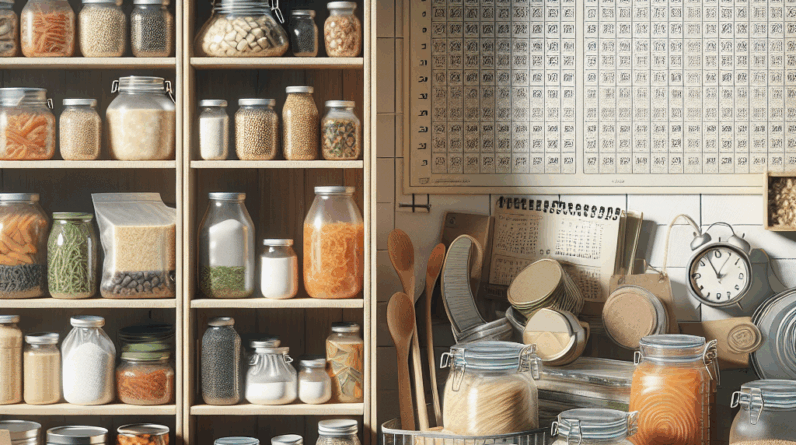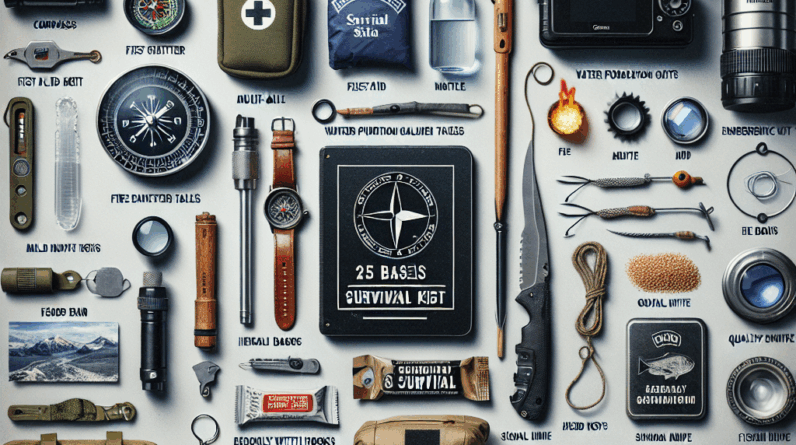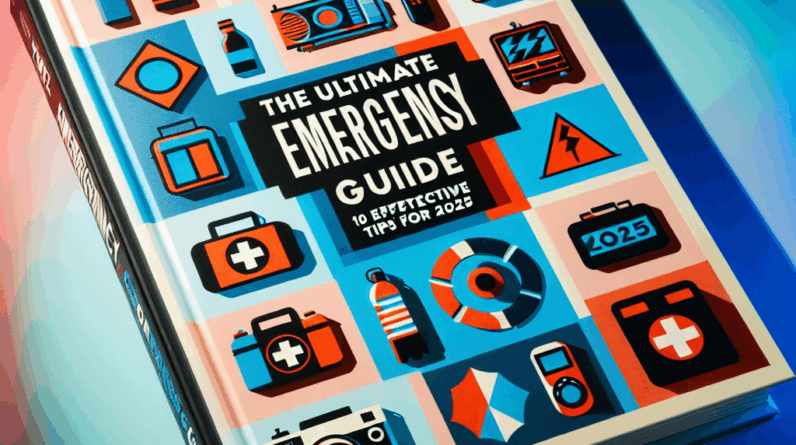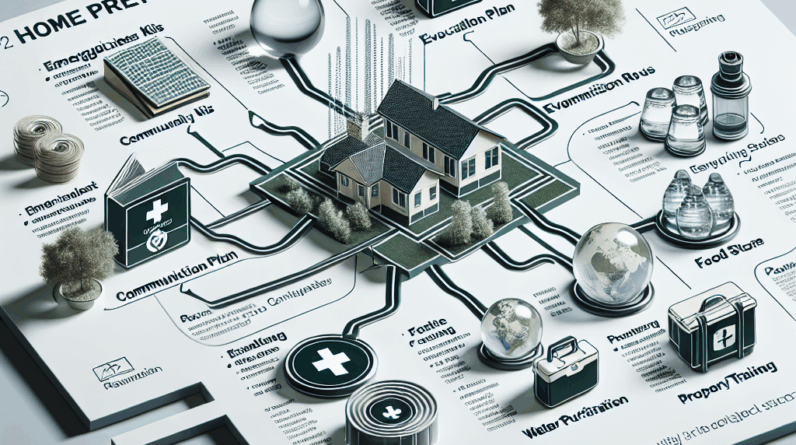In the year 2025, the necessity for family emergency preparedness has never been more critical. Disasters, whether natural or man-made, can occur without warning. As someone who cares deeply about family safety, I know planning for various potential emergencies seems daunting but is crucial for protection. This guide provides ten robust strategies to ensure your family is prepared, giving you peace of mind in facing any unforeseen events.
Understanding the Importance of Family Emergency Preparedness
Every family’s situation is unique, with specific risks based on geographical location and lifestyle. In 2025, being well-prepared can significantly lessen the impacts of disasters, from floods to technological disruptions. For example, families equipped with an emergency strategy during the 2024 wildfires saw less distress and a faster return to normalcy. Recognizing the critical role of emergency preparedness compels us to adopt essential measures today.
Identify potential dangers specific to your area such as earthquakes, floods, or blizzards. This knowledge will shape your preparedness strategies effectively. Engage all family members in a thorough risk assessment to make sure everyone is aware of the hazards. This step is crucial in crafting a tailored emergency plan that addresses your particular needs based on local insights and historical data.
Creating a Family Emergency Plan
A comprehensive emergency plan details your family’s course of action in response to various threats, specifying evacuation routes, meeting points, and vital contact information. Ensure that all family members know these details by heart, especially in chaotic situations.
In 2025, leveraging digital tools like emergency notification apps can significantly enhance your family’s connectivity during disasters. Regular practice of the laid-out procedures with all family members, adapting for scenarios like separations, is vital. It’s not just about having a plan, but also about everyone knowing it inside out through regular drills.
Building an Emergency Supply Kit
Your kit should include basic survival items such as water, non-perishable food, first aid materials, a flashlight, batteries, hygiene products, and crucial documents. Given the evolving nature of global health standards in 2025, adding items like portable chargers and masks is advisable.
Store these supplies in an easily accessible location and in durable, waterproof packaging. Consider having additional smaller kits for vehicular or workplace emergencies to ensure you’re prepared no matter where you are.
Establishing Communication Strategies
Effective communication is vital in any emergency. Establish a clear contact hierarchy and preferred communication methods, including texts, calls, and online platforms. Smart devices and wearable technology in 2025 can offer additional security through real-time updates and alerts.
Ensure that all family members, including children and the elderly, are familiar with these plans. Having alternative communication methods, such as battery-powered radios or satellite phones, is crucial when conventional systems fail.
Practicing Emergency Drills Regularly
Conduct regular drills for situations like fires, earthquakes, and lockdowns. The use of cutting-edge virtual reality tools in 2025 can make these drills more effective and engaging. The goal is to make these responses second nature through repetition and to refine your strategies through each exercise.
Involve your community in these drills to foster a broader culture of preparedness. Document each drill’s outcomes to track progress and identify areas for improvement.
Securing Your Home Against Disasters
Implement measures to fortify your home such as securing heavy furniture, installing storm shutters, and reinforcing structural elements. Smart home technologies available in 2025 can provide early warnings about potential issues.
Regularly review your homeowners’ insurance to ensure it covers the types of disasters most likely to occur in your area. Keep digital copies of important documents for easy access during emergencies.
Staying Informed with Real-Time Alerts
Subscribe to services like NOAA and local emergency notifications to get timely updates specific to your location. Advanced alert systems in 2025 are even more precise, providing personalized recommendations for efficient responses.
Understand the different levels of alerts—watches, warnings, and advisories—and teach your family how to respond appropriately. Always have a battery-powered means to receive updates.
Health and Medical Preparedness
Include necessary medications, first aid items, and sanitation supplies in your emergency kit. If you have family members with special health needs, tailor your medical kit to accommodate them.
Identify key health facilities and maintain a list of contacts for emergencies. Keeping up-to-date medical records easily accessible can facilitate prompt and effective medical responses during emergencies.
Special Considerations for Vulnerable Family Members
Prepare specifically for the needs of children, seniors, or those with disabilities. Engage with local organizations that provide additional support during emergencies to ensure all family members are protected.
Empowering vulnerable individuals through tailored plans and regular practice helps ensure their safety and comfort during disasters.
Planning for Financial Security During Emergencies
Secure digital copies of essential financial documents and maintain a robust emergency fund to cover potential unexpected expenses. Be aware of available emergency financial resources such as grants and relief programs to facilitate quicker recovery.
Understanding and preparing for financial implications helps alleviate stress and contributes to a smoother recovery phase post-disaster.
FAQs
1. What is family emergency preparedness and why is it important in 2025?
Family emergency preparedness involves equipped planning for unexpected disasters, which is crucial in 2025 due to evolving environmental and technological threats.
2. How often should I update my family emergency plan?
Review and update your emergency plan at least annually, or after significant life events that could affect your preparedness.
3. What are the top items to include in an emergency supply kit for 2025?
Essentials include water, non-perishable foods, tech gadgets for updates, masks, and hygiene items. Enhanced communication devices are also recommended.
4. How can I better prepare my vulnerable family members?
Customize emergency plans to accommodate their specific needs and ensure they are well-versed in emergency procedures. Engage with community support for additional resources.
5. Why is ongoing practice important for family emergency preparedness?
Consistent practice helps automate emergency responses, reduces anxiety, and ensures all family members are prepared for real situations.
By implementing these strategies, your family can face 2025 with confidence, knowing you are well-prepared for any emergency. Engage actively in these preparations to build a secure and resilient future for your loved ones.






